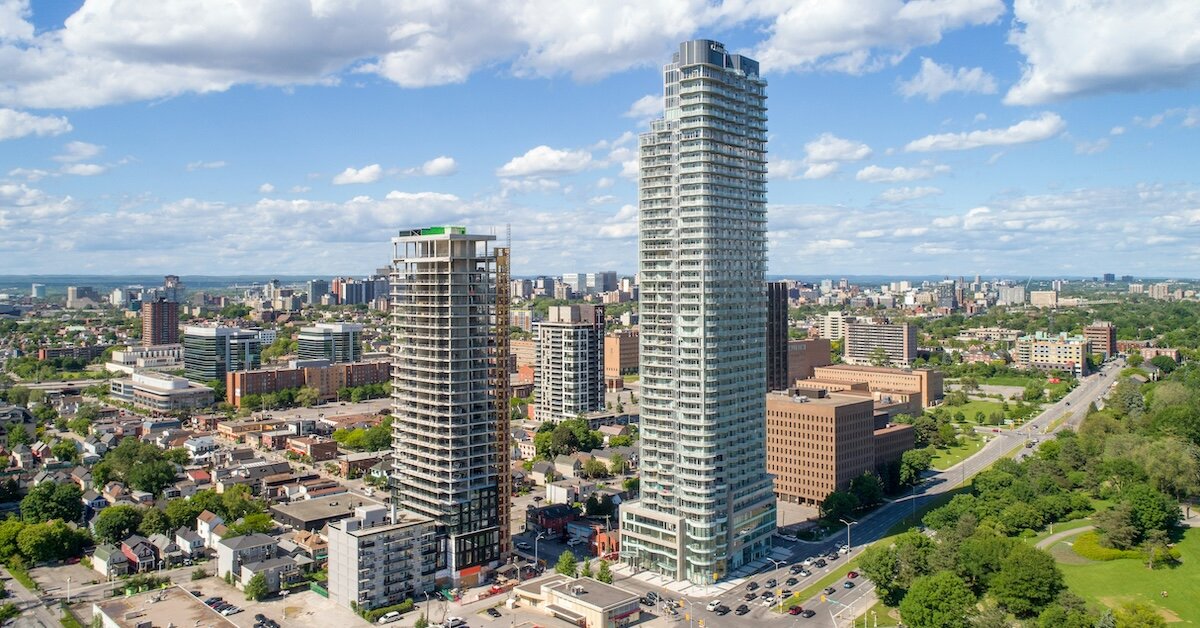Commercial Real Estate Investing 101


Commercial real estate (CRE) investing offers a powerful opportunity to build long-term wealth and diversify your investment portfolio. While the world of CRE includes offices, industrial spaces, retail centers, and more, many first-time investors find a natural entry point in multifamily properties. In this guide, we’ll cover the basics of how to get started in investing in commercial real estate - with a special focus on multifamily investments - so you can dive in with confidence.
What is Commercial Real Estate Investing?
Commercial real estate investing involves purchasing income-producing properties used for business purposes. These investments generate revenue through rent and, over time, appreciate in value.
CRE spans multiple asset classes, from office buildings and industrial parks to retail centers and multifamily apartment complexes. Each asset class comes with its own benefits and challenges, but for many beginners, multifamily properties provide a straightforward way to enter the market.
Types of Commercial Real Estate Investments
Based on investment goals and needs, it is crucial to carefully consider your options for commercial real estate investment. With the proper information, you can be well-prepared to make confident, informed decisions for your portfolio.
There are several different types of commercial real estate investments to understand when planning your strategy:
- Office Spaces: Office properties provide versatile spaces for a range of businesses, from small professional firms to large corporate headquarters. They often feature adaptable layouts that can accommodate evolving tenant needs, making them attractive investments for sectors like finance, technology, and consulting.
- Retail Properties: Retail real estate encompasses standalone storefronts, strip malls, and large shopping centers where consumer-facing businesses thrive. Strategically located to drive high foot traffic, these properties offer investors reliable income streams through long-term leases with established brands.
- Industrial Properties: Industrial properties, such as warehouses, distribution centers, and light manufacturing facilities, are essential to the logistics and supply chain sectors. With the boom in e-commerce, these assets have gained increased appeal, often delivering stable cash flow under long-term, triple-net lease agreements.
- Multifamily Properties: Multifamily investments include apartment complexes and multi-unit residential buildings that cater to a diverse tenant base. By offering multiple income streams under one roof, they reduce vacancy risk and are often more resilient during market fluctuations, making them a cornerstone of many CRE portfolios.
- Special Purpose Properties: Special purpose properties are tailored for specific uses - such as educational facilities, healthcare centers, or cultural venues - that require unique design features and management approaches. While they demand a deep market understanding, their scarcity and specialized appeal can lead to premium returns.
- Owner-Occupied Commercial Properties: Owner-occupied properties serve dual roles by housing the business operations of the owner while also acting as a long-term investment. This model allows companies to build equity, control operating costs, and benefit from potential tax advantages as property values appreciate over time.

How to Get a Commercial Real Estate Loan
Securing a commercial real estate loan may seem daunting, but breaking the process into clear steps can simplify your path to financing. Understanding your options and preparing thoroughly are key to your success.
Types of Commercial Real Estate Loans
- SBA Loans: Programs like the SBA 7(a) and CDC/504 loans offer favorable terms for small business owners.
- Conventional Mortgages: Ideal for experienced investors, these loans typically come with longer terms and competitive interest rates.
- Short-Term Options: Bridge loans and hard money loans provide quick financing for time-sensitive projects, though they often carry higher interest rates.
Steps to Secure a CRE Loan
1. Decide on Your Borrower Structure: Determine whether you will apply as an individual or through a business entity (such as an LLC or corporation). Lenders will evaluate your financial history and business experience, so choose the structure that best supports your long-term investment goals.
2. Prepare Your Documentation: Gather key financial documents, including credit histories, financial statements, and a detailed business plan outlining your investment strategy, target property types, and projected returns.
3. Understand Key Financial Metrics: Lenders focus on specific metrics, including:
- Loan-to-Value (LTV) Ratio: This compares the loan amount to the property’s appraised value, typically ranging between 65% and 80%.
- Debt Service Coverage Ratio (DSCR): A DSCR of at least 1.25 is generally required, ensuring that the property’s income comfortably covers mortgage payments.
4. Work with a Professional: Consult with commercial mortgage brokers or lenders who can help guide you through the application process and match you with the best financing option.

Tips for New Commercial Real Estate Investors
Before you leap into your first investment, it is essential to have a strategic plan and thorough research. Here are a few practical tips for investing in real estate as a first-timer:
Educate Yourself About CRE
Begin by immersing yourself in the fundamentals of the commercial real estate market, learning as much as possible. Read industry books and publications, subscribe to market reports, and attend webinars or seminars to learn key concepts such as property valuation, financing strategy, and market cycles.
Define Your Investment Goals and Strategy
Clearly outline your investment objectives, determining if you’re aiming for long-term rental income, short-term gains, or a hybrid approach. Also, consider whether indirect vs. direct investments are the ideal route. Based on your financial goals and risk tolerance, determine which types of CRE properties and geographic markets are the right fit. With a well-defined strategy, you will be able to evaluate opportunities more effectively and make more productive decisions.
Secure Financing and Understand Your Options
Be sure to carefully review the financing options available for CRE investments, including conventional loans, government-backed programs, syndications, REITs, and partnerships. As you gain a solid understanding of the terms and requirements of CRE financing options, you’ll be prepared to secure necessary capital while thoughtfully managing financial risk.
Do Your Due Diligence
Before you commit to a commercial property, conduct thorough due diligence by analyzing key financial metrics (such as cap rates, net operating income, and cash-on-cash return), evaluating the property location and condition, and researching market trends. Additionally, make strategic use of professional appraisals and market data to avoid costly mistakes.
Leverage Professional Networks
Relationships with experienced investors, brokers, and property managers can open the door to invaluable insights. A well-rounded professional network can provide guidance and industry best practices, and even help you discover off-market opportunities - giving you a competitive edge.

Multifamily Investing: A Gateway to CRE
Multifamily investments have proven to be one of the most resilient commercial real estate property sectors over the last several years. Even in challenging economic conditions, vacancy rates hover around all-time lows while rents continue to rise in many markets.
Although multifamily investing requires some homework, buying multifamily buildings can be more straightforward than other commercial buildings for sale. Let’s examine why multifamily buildings are a growing gateway for first-time multifamily investors.
What is a Multifamily Property?
A multifamily property is a residential building that contains more than one unit. Common types of multifamily investments include:
- Duplex (2 units)
- Triplex (3 units)
- Fourplex or Quadruplex (4 units)
- Townhouses and row houses
- Apartments
- Condominiums
- Cooperatives or Co-ops
- Student housing
- Mobile home parks
- Senior housing
- Assisted living facilities
Multifamily Investments vs. Single-Family Investments
First-time CRE investors often opt for single-family investments without considering other rental property options, such as multifamily or apartment buildings for sale. While each residential subtype has pros and cons, there are several distinct characteristics to know about multifamily property.
For example, every unit in a multifamily building has a unique address and usually a private entrance. Multifamily units have individual kitchens, bathrooms, living rooms, and at least one bedroom. On the other hand, some multifamily investments may offer less privacy to tenants because of shared walls or common areas such as a central laundry room or parking lot.
Single-family homes have risen in popularity recently, especially as millennials with growing families seek more space and room for remote work. However, rents in many markets are outpacing affordability, turning many to multifamily rentals instead.

Multifamily Asset Classes
Multifamily property is generally categorized into one of three asset classes:
Class A multifamily property is a new building with state-of-the-art amenities in the best locations. These properties cost the most to buy but also command the highest rents.
Class B multifamily buildings are in good condition with average amenities. Apartment buildings like these often lie in middle-income neighborhoods. They provide a decent balance of risk and reward, with at-market rents and a lower acquisition cost than brand-new property.
Class C multifamily property is basic housing with minimal amenities in lower-income areas. Also known as “cash cow”apartment buildings, Class C rental property offers below-market rents and is the least expensive for an investor to purchase.
Benefits of Multifamily Real Estate
Multifamily real estate can benefit first-time and experienced commercial real estate investors.
Scaling up a real estate portfolio is much simpler with multifamily buildings thanks to their multiple units or “doors.” Rather than one central tenant, dozens of tenants make financing easier than other commercial real estate types, and property management fees are spread across multiple units instead of a single house.
- Investors can choose from various multifamily product types, from a 4-plex to bigger apartment buildings and niche multifamily properties such as student housing.
- Investors receive multiple cash flow streams from multifamily real estate because one facility generates rental income from each unit.
- Value-add multifamily investing is easier because units can be renovated individually and generate incremental revenue from appliance rental or amenity upgrades.
- There can be less risk with investing in multifamily property over other CRE types: people always need a place to live, and renting an apartment is often cheaper than renting a house.
- Streamline the potential for passive income from multifamily by hiring a local property manager to handle the day-to-day responsibilities.
Potential Drawbacks to Multifamily Investments
While investing in multifamily real estate has plenty of benefits, there are also some potential drawbacks.
- Buying a multifamily investment requires more up-front capital because property prices are usually higher. However, the cost per unit of a multifamily building is often less than buying a single-family house.
- The amount of money needed in a CapEx account (capital expenditure) may also be more considerable to ensure emergency funds are available if multiple units require repairs simultaneously.
- Competition from other investors for well-positioned multifamily property can be more intense in some real estate markets. For this reason, many first-time CRE investors may focus on small two- or three-unit multifamily buildings to add to their portfolios.

How to Finance Multifamily Investments
Many beginner multifamily investors are surprised to learn that lenders are more likely to approve an apartment building loan than a single-family rental loan. That’s because banks focus on the monthly cash flow a property generates.
If the tenant in a house leaves, the vacancy becomes 100% with zero cash flow. On the other hand, if one unit goes vacant in a 20-unit apartment building, the vacancy rate is only 5%, with plenty of cash flow remaining to pay for operating expenses and the mortgage.
Some options for financing multifamily investments include:
- Conventional loans can be the best choice for buying small multifamily buildings with two to four units.
- Government-backed mortgage loans for multifamily assets from Fannie Mae, Freddie Mac, and the Federal Housing Administration (FHA) are good options for small multifamily properties and buildings with five or more units.
- Portfolio loans are non-conforming loans that offer multifamily investors more flexibility in loan terms and conditions. Investors can use them to finance multiple multifamily properties at the same time.
- Short-term multifamily financing options like hard money and bridge loans are best for investors buying multi-unit residential property. These are especially useful if a building requires significant renovation or the owner is repositioning other types of commercial real estate, like turning a hotel into a multifamily property.
Best Markets for Investing in Multifamily in 2025
Some real estate markets are better than others for buying multifamily property—cities with strong population growth and a diversified economy should perform best in the years ahead.
Here are some of the top cities for potential multifamily investing based on current market performance, per Crexi Intelligence:
- Chicago
- San Diego
- Columbus
- Nashville
- Raleigh
- Boston
- Dallas
- San Jose
- Philadelphia
- Twin Cities (Minneapolis/St.Paul)
Commercial real estate investing is a powerful way to build wealth, and getting started is within reach when you’re prepared. Focus on educating yourself, setting clear investment goals, and assembling a trusted team of professionals to guide you through financing and property selection. With careful planning and diligent research, you can confidently take the first step toward a successful CRE investment journey.
Ready to find your first multifamily investment? Explore Crexi’s nationwide multifamily property database today!









